Paris, a city full of historical monuments, famous museums, and other sites that magnetize millions of tourists each year. It is also one of the most romantic cities in Europe and one of the most visited cities in the world. This historical and cultural city is also very fashionable. In this article, we will introduce you the top 10 sites in Paris that tourists visit.
Notre Dame de Paris
Notre Dame de Paris, as the most attractive site, is a medieval Catholic cathedral that dedicated to the Virgin Mary. The cathedral was also considered to be one of the finest examples of French Gothic architecture.
It is perhaps the most famous landmark in France: standing tall in the center of the city for centuries, accepting the people’s reverance. Even though its history was forever changed on 15 April 2019 when a massive fire broke out causing the medieval structure’s spire to collapse, this place is still a place worth remembering. While tourists can’t go inside the site itself, the area may still prove popular to those looking to pay their respects. Parisians and visitors are welcome to write messages of support in both the main and local city halls. (Source: USAToday)
Basilique du Sacré-Cœur
Basilique du Sacré-Cœur, the Basilica of the Sacred Heart of Paris, is a Roman Catholic church and minor basilica that was dedicated to the Sacred Heart of Jesus. The basilica stands at the highest point in the city.
This historical church is also regarded as a double monument of political and cultural. The basilica was initiated after the defeat in the 1870 Franco-Prussian War. It is also a symbol of the socialist Paris Commune, which crowned its most rebellious community in 1871.
The basilica was designed by Paul Abadie. Construction began in 1875 and was completed in 1914. The basilica was consecrated after the end of World War I in 1919. In response to requests from French bishops, Pope Pius IX promulgated the feast of the Sacred Heart in 1856. The basilica itself was consecrated on 16 October 1919.
Since 1885 (before construction had been completed) the Blessed Sacrament (Christ’s body, consecrated during the Mass) has been continually on display in a monstrance above the high altar. Perpetual adoration of the Blessed Sacrament has continued uninterrupted in the basilica since 1885. Tourists and others are asked to dress appropriately when visiting the basilica and to observe silence as much as possible, so as not to disturb persons who have come from around the world to pray in this place of pilgrimage, especially since there is the exposition of the Blessed Sacrament. (Source: Wikipedia)
The Louvre
The Louvre is the world’s largest art museum and a historic monument in Paris. It is also a central landmark of the city, located on the Right Bank of the Seine, in 1st arrondissement. Approximately 38,000 objects from prehistory to the 21st century are exhibited over an area of 72,735 square meters (782,910 square feet). In 2019, the Louvre received 9.6 million visitors, making it the most visited museum in the world.
The museum opened on 10 August 1793, exhibiting 537 paintings. Most of the painting were royal or confiscated church property. Because of structural problems, the museum was closed from 1796 to 1801. Under Napoleon’s leadership, the collection was increased and the museum was renamed Musée Napoléon. After Napoleon’s abdication, many works seized by his armies were returned to their original owners. The collection was further increased during the reigns of Louis XVIII and Charles X. During the Second French Empire the museum gained 20,000 pieces.
Since the Third Republic, shareholding has grown steadily through donations and bequests. The collection is divided among eight curatorial departments: Egyptian Antiquities; Near Eastern Antiquities; Greek, Etruscan and Roman Antiquities; Islamic Art; Sculpture; Decorative Arts; Paintings; Prints and Drawings.
To ensure optimal conditions, all visitors will be required to book a time slot (online ticketing service available as of June 15, 2020) and wear a mask in the museum. You will also be applying the safety and social distancing measures recommended for public spaces.
Musée du Louvre opening hours
Monday: 9 a.m.–6 p.m.
Tuesday: Closed.
Wednesday: 9 a.m.–6 p.m.
Thursday: 9 a.m.–6 p.m.
Friday: 9 a.m.–6 p.m.
Saturday: 9 a.m.–6 p.m.
Sunday: 9 a.m.–6 p.m.
Rooms begin closing at 5:30 p.m.
Eiffel Tower
The Eiffel Tower is a wrought-iron lattice tower on the Champ de Mars in Paris. It is named after the engineer Gustave Eiffel, whose company designed and built the tower.
The first digging work started on the 28th January 1887. On the 31st March 1889, the Tower had been finished in record time – 2 years, 2 months and 5 days – and was established as a veritable technical feat.
Opening times (Last ascent before 10:30pm):
By lift:
1st July- 6 July: 10:00-23:45
Rest of year: 9:30 – 23:45
By stairs:
1st July- 6 July: 10:00-23:45
Rest of year: 9:30 – 23:45
For visits between July 1st, 2020 and August 31st, 2020, -50% on tickets for children (aged 4-11).
Musée d’Orsay
The Musée d’Orsay is a museum located on the Left Bank of the Seine in Paris. France. It is in the former Gare d’Orsay railway station, which was built between 1898 and 1900.This is a liberal arts railway station. The museum mainly collects French art from 1848 to 1914, including paintings, sculptures, furniture, and photography. It houses the world’s largest collection of Impressionist and post-Impressionist masterpieces. These painters include: Monet, Manet, Degas, Renoir, Cézanne, Seurat, Sisley, Gauguin, and Van Gogh.
Opening hours:
Tuesday 9h30-18h
Wednesday 9h30-18h
Thursday 9h30-21h45
Friday 9h30-18h
Saturday 9h30-18h
Sunday 9h30-18h
Monday Closed
Closed on 1 May and 25 December Last tickets sold at 5pm (9pm Thursdays)
Museum cleared at 5.15pm (9.15pm Thursdays).
The museum building was originally a railway station, which was built for the Chemin de Fer de Paris à Orléans and was completed in time for the 1900 Exposition Universelle. It was the terminus of the French Southwest Railway until 1939.
Because of the current health situation, all visitors – both those paying for entry and those enjoying free entry – must obligatorily book a timeslot so that the number of people visiting the museum at the same time can be limited.
• Visitors aged 11 years and over must obligatorily wear a face mask inside the museum. No face masks are provided on site.
• Access to the lockers and cloakrooms will be limited to cumbersome objects that are not allowed in the museum display rooms.
• Hand sanitizer will be available for you inside the museum.
During your visit, make sure you respect the protective hygiene measures and social distancing rules by keeping over a metre between you and other visitors.
Ticket prices: Museum admission ticket-
Full rate 14 €
Reduced rate (For accompanying persons of a young visitor under 18, residing in the European Union, within the limit of 2 accompanying persons per child) 11€
Free under 18 years old and for all the 1st Sunday of the month
(Source: The Musée d’Orsay’s official website)
Cité des Sciences et de l’Industrie
The Cité des Sciences et de l’Industrie (“City of Science and Industry”, abbreviated la CSI or simply CSI) is the biggest science museum in Europe. Located in Parc de la Villette in Paris, it is one of the three dozen French Cultural Centers of Science, Technology and Industry (CCSTI), promoting science and science culture.
OPENING TIMES:
The Cité s open from Tuesday to Saturday 10.00 am – 6.00 pm and 10.00 am – 7.00 pm on Sunday.
It is closed on Mondays and the following public holidays: January 1, May 1 and December 25.
Chapel of Our Lady of the Miraculous Medal
The Chapel of Our Lady of the Miraculous Medal in Paris, is the chapel where the Blessed Virgin Mary appeared to Saint Catherine Labouré in 1830. She requested the creation of the medal which came to be known as the Miraculous Medal. The Chapel was part of the mother house of the Daughters of Charity of Saint Vincent de Paul. Catherine Labouré was a seminary sister (novice) there when she had her apparitions.
The Chapel of Our Lady of the Miraculous Medal is more commonly referred to by its address, “140 rue du Bac”, or simply the street on which it is situated, rue du Bac.
Today, The Chapel of Our Lady of the Miraculous Medal is an important place of prayer and pilgrimage that draws believers from all over the world who wish to prayerfully reflect and ask the Virgin Mary’s protection.
Inside of the church, you can find the Virgin Mary open her hand with rings with precious stones. And these jewels emit rays of light, becoming increasingly bigger as they beam toward earth. It is described by Catherine that the radiance of these beans justifies and strengthens the trust in Mary’s faithfulness toward her Creator and children, in the efficacy of her intervention and the final victory.
OPENING HOURS:
Daily except for Tuesday 7:45-13:00, 14:30-19:00/
Tue 7:45-19:00/ closed on holidays except for religious holidays.Ouverture :7h45 à 13h00 et 14h30 à 19h00
Messe :8h00, 10h30, 12h30 Anticipée :17h15
Confessions :9h00 à 13h00 et 15h00 à 17h30
Célébration :Chapelet :16h00Vêpres :18h50
Muséum national d’histoire naturelle – Jardin des Plantes
The French National Museum of Natural History, known in French as the Muséum national d’histoire naturelle, is part of Sorbonne Universities. The main museum is located on the left bank of the Seine in Paris, France. It was established in 1635 by King Louis XIII as the royal garden of medicinal plants, after the Revolution, it was reorganized in its present form and under its present title in 1793. As of 2017, the museum has 14 sites throughout France, including the original location at the Jardin des Plantes.
The French National Museum of Natural History encompasses 13 sites in Paris, and throughout France. Its historic heart is situated in the Jardin des plantes. In the 5th arrondissement of Paris. Each galley, garden or zoo has its own specificities and you will surely find something that will suit your envy.
Arc de Triomphe
The Arc de Triomphe de l’Étoile is one of the most famous monuments in Paris. It is located at the western end of the Champs-Élysées, in the center of Place Charles de Gaulle, The predecessor of the Charles de Gaulle was the junction of the “Starlight Plaza” formed by its twelve radiating passages. The location of the arc and the plaza is shared among three arrondissements, 16th (south and west), 17th (north) and 8th (east). The Arc de Triomphe honours those who fought and sacrificed for France in the French Revolutionary and Napoleonic Wars. The names of all French victors and generals are engraved on its inside and outside. Under its dome is the Tomb of the Unknown Soldier of World War 1.
Paris’s Arc de Triomphe was the tallest triumphal arch until the completion of the Monumento a la Revolución in Mexico City in 1938, which is 67 metres (220 ft) high. The Arch of Triumph in Pyongyang, completed in 1982, is modelled on the Arc de Triomphe and is slightly taller at 60 m (197 ft). La Grande Arche in La Defense near Paris is 110 metres high. Although it is not named an Arc de Triomphe, it is designed on the same model from the perspective of the Arc de Triomphe. It qualified to be the tallest arch in the world.
The Arc de Triomphe is accessible by the RER and Métro, with exit at the Charles de Gaulle—Étoile station. Because of heavy traffic on the roundabout of which the Arc is the centre, it is recommended that pedestrians use one of two underpasses located at the Champs Élysées and the Avenue de la Grande Armée. A lift will take visitors almost to the top – to the attic, where there is a small museum which contains large models of the Arc and tells its story from the time of its construction. Another 40 steps remain to climb in order to reach the top, the terrasse, from where one can enjoy a panoramic view of Paris.
If you want more advice about Parisn or to let us handle your travel needs, don’t hesitate to contact us by email (info@frenchwaytravel.com) or by phone (New York : +1 212 243 3500, Paris : + 33 1 44 06 08 70).








